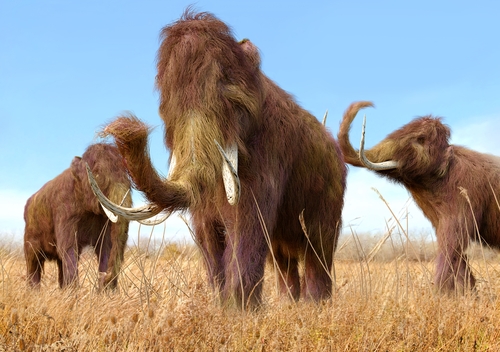Resurrecting a mammoth seems pointless and cruel

Attempts to bring back extinct animals could do more harm than good, says Tom Ireland
The Biologist 62(4) p5
Researchers are one step closer to resurrecting a woolly mammoth, according to reports. Those working on turning science fiction into reality include researchers from Harvard University and Stockholm Natural History Museum, plus others in Canada, Korea and Russia. Proposed techniques range from full cloning, using recently found ancient mammoth DNA[1], to splicing mammoth genes into Asian elephant embryos[2].
Despite the media hype, and some saying it could happen within five years, the possibility of success remains remote. But still, everything about this sort of research concerns me – and not just because I saw Jurassic World recently (spoiler: it doesn’t end well for humans).
Under the guise of 'restoring damaged or lost ecosystems', scientists are rushing headlong into a project that involves making unprecedented genetic changes to a highly intelligent, iconic and endangered animal. What are the chances that this complex gene-editing procedure will have severe off-target effects? This PR-led project has for years generated hype and funding by feeding morsels of detail to the press with no peer-reviewed publications or open discussions about methods, ethics or welfare. The opaque plans talk of editing elephant embryos to include sections of recovered mammoth DNA, and the use of an artificial womb to birth said creature - a device that is yet to be invented.
Even if the procedure miraculously results in a healthy elephant-mammoth hybrid, what kind of existence will the first animals have? And as for restoring lost ecosystems - why restore one from 4,000 years ago?
The use of animals in biological research has always been open to ethical debate, but we are in an era of unprecedented public understanding as to its benefits. This sort of aimless tinkering would provide a big, hairy, lonely orange symbol for anti-vivisectionists. Some believe this sort of technology could be used to make elephants or other species more hardy as our planet changes, but where is the evidence or assesment of this idea? The teams pioneering this work do not seem to be operating within the traditional academic grant model, where work is only funded after a rigorous assesment of its value and ethics. Such projects could end up putting other, more valuable but contentious research at risk, such as gene-edited crops or synthetic biology, if science is deemed to have gone ‘too far’.
If researchers really think ‘de-extinction’ is a worthwhile avenue of research, they should surely focus their efforts on keystone species that are relevant to the world we live in today.
Creating odd biological chimeras may well reawaken the spirit of the mammoth, but it will also reanimate the debate about whether scientists should ‘play god’ with nature. It could even bring biology into disrepute. Just because we can doesn’t mean we should.
1) ‘Scientist takes mammoth-cloning a step closer’, The Sunday Times, 23 March 2015.
2) ‘South Korean and Russian scientists bid to clone mammoth’, The Telegraph, 13 March 2012.
Tom Ireland is managing editor at the Royal Society of Biology. He can be found tweeting @Tom_J_Ireland


